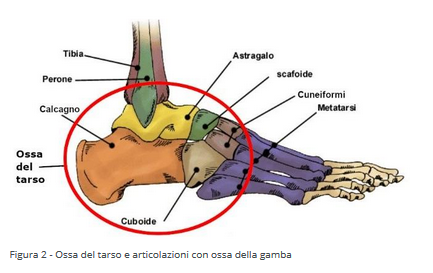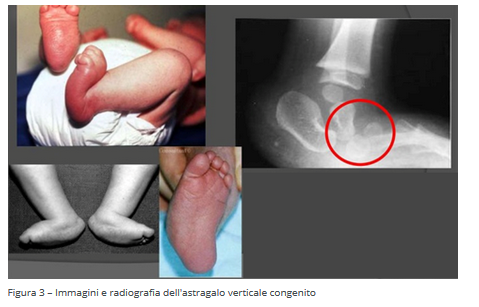Valgus convex foot or congenital vertical talus
Rare congenital foot deformity present from birth that can make walking painful. Correction requires surgical intervention
WHAT IS IT
Congenital vertical talus (or valgus convex foot, rocking foot, or congenital rigid flatfoot) is a rare congenital foot anomaly that can occur in isolation or in association with other anomalies and malformations. It is characterized by an abnormal position of the talus, which is tilted inward and appears practically vertical. The talus, or "anklebone," is a foot bone located in the tarsus (Figure 1). By articulating with the leg bones - the tibia and fibula - it transmits the body's weight to the foot (Figure 2).
HOW IT MANIFESTS
Congenital vertical talus is usually diagnosed at birth due to the presence of a rounded protrusion on the plantar and inner surface of the foot. This protrusion is caused by the abnormal position of the talus (Figure 3). As seen in the X-ray image, the talus is tilted inward and appears practically vertical. The calcaneus is also verticalized, but to a lesser extent. As the child begins to stand, the tarsal bones undergo changes. The talus deforms into an hourglass shape, accentuating its verticalization. The calcaneus, also vertical, moves backward, and the surface underneath becomes rounded. Calluses develop at the calcaneus and along the inner edge of the foot. When walking begins, the heel does not touch the ground as it should. All tendons, ligaments, and capsules on the top of the foot retract. The deformity does not prevent walking but can be painful and makes choosing footwear difficult.
TREATMENT
Congenital vertical talus is challenging to correct and tends to recur. At birth, delicate manipulations and immobilizations with plaster devices are performed to counteract tendon and skin retractions (preventing worsening). However, correcting the joints between the talus and nearby bones in this way is challenging. Therefore, surgical intervention is necessary. Many procedures have been described for correcting this rare condition, and the interventions vary depending on the patient's age. The essential steps include:
- Positioning the talus and nearby bones correctly, particularly the scaphoid (see Figure 2).
- Correcting the verticalized back of the foot and placing the calcaneus in its correct position under the talus.
- Correcting the front of the foot (forefoot).
It is best to intervene between 6 months and 2 years. However, if the situation is very complex, delaying foot surgery until complete child development is reasonable.
PROGNOSIS
The prognosis is good, with recovery of support on the sole of the foot and improvement in walking.
written by: Rosa Russo, Pier Francesco Costici - Orthopedics Operational Unit in collaboration with: Bambino Gesù - Institute for Health
original article from ospedalebambinogesù.it





